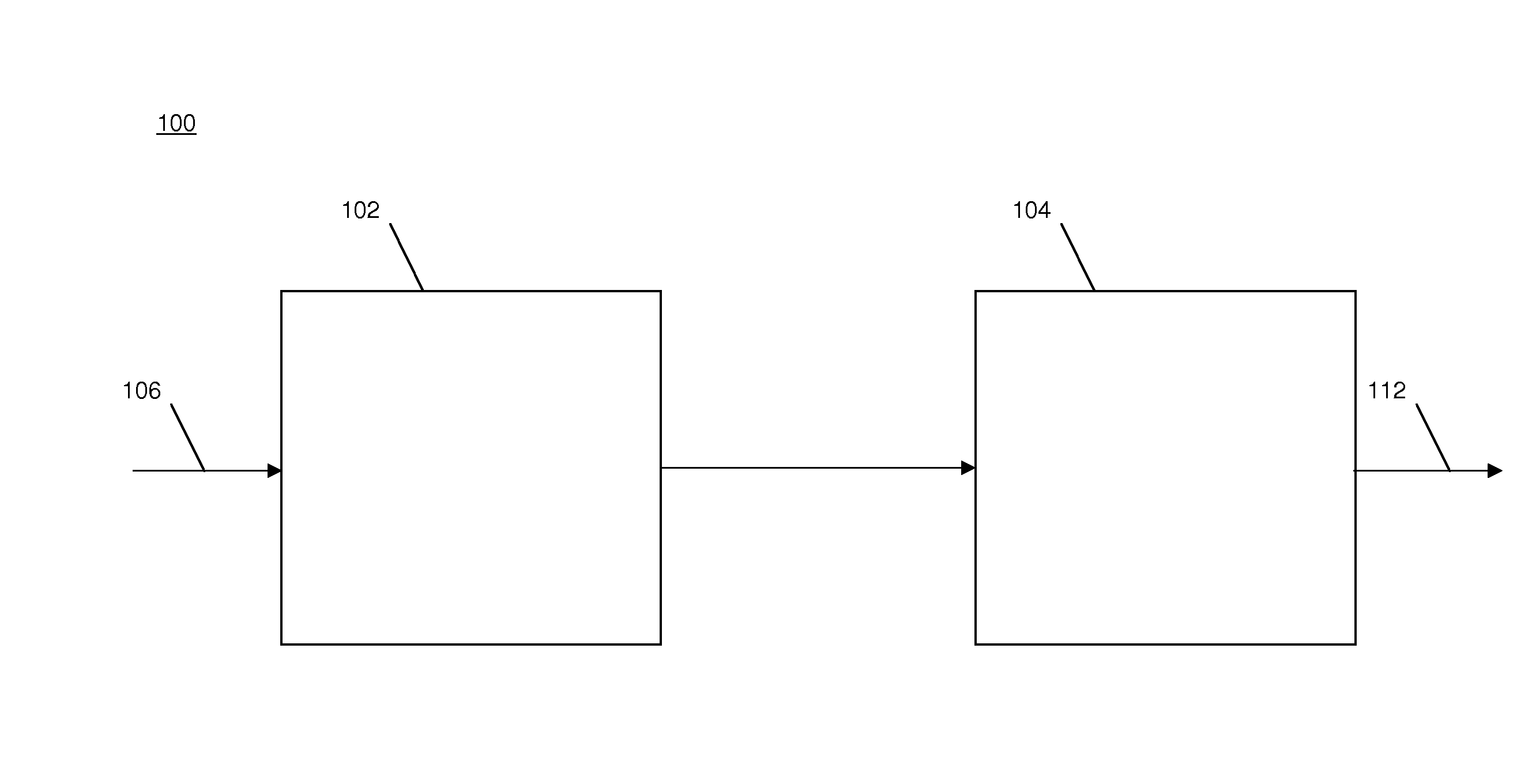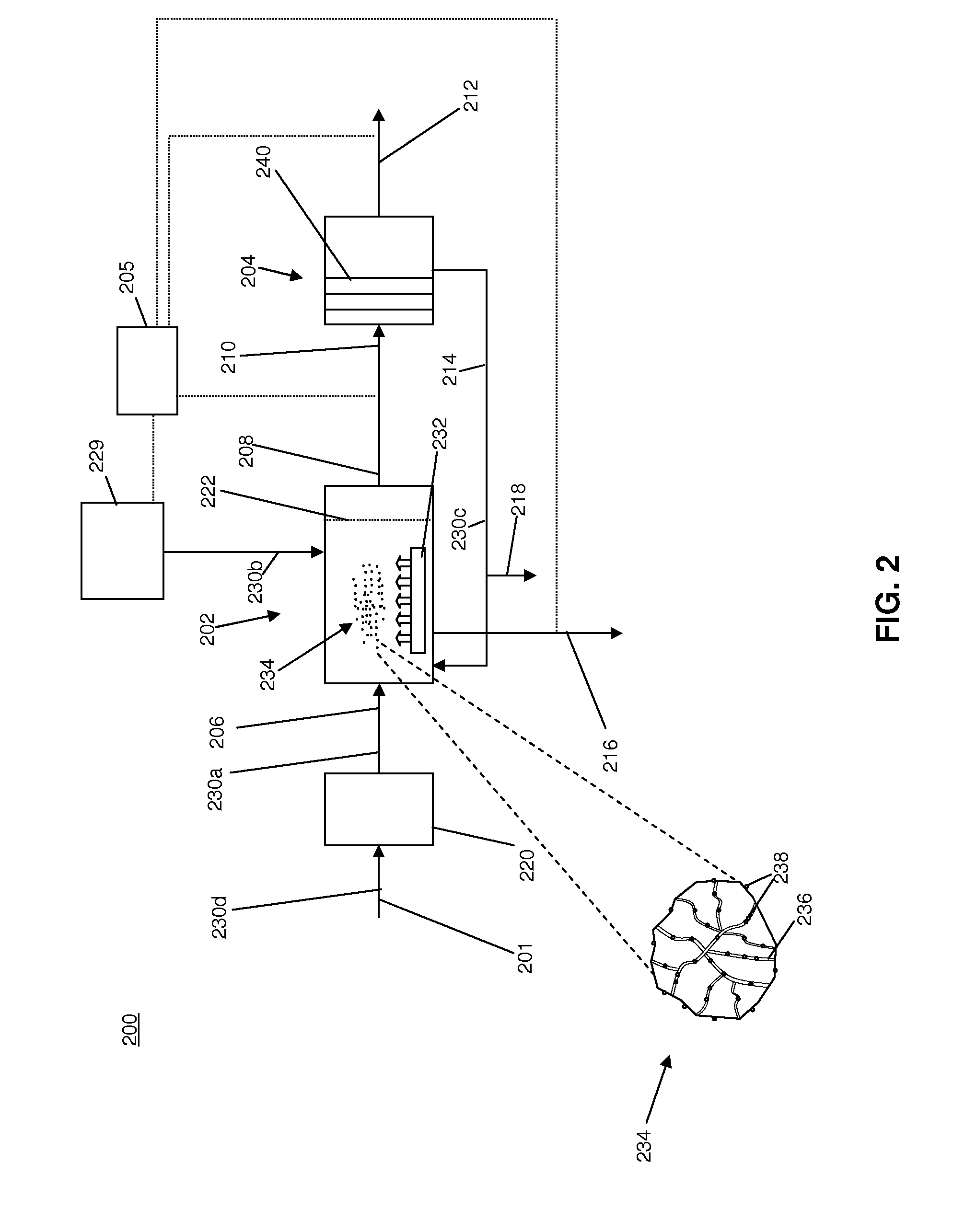Low concentration wastewater treatment system and process
a wastewater treatment system and low concentration technology, applied in the field of system and method for treating low concentration wastewater streams, can solve the problems of high operational cost and high risk of all life forms
- Summary
- Abstract
- Description
- Claims
- Application Information
AI Technical Summary
Benefits of technology
Problems solved by technology
Method used
Image
Examples
Embodiment Construction
[0028]As used herein, “biologically refractory compounds” refer to those types of chemical oxygen demand (“COD”) compounds (organic and / or inorganic) in wastewater that are difficult to biologically break down when contacted with micro-organisms. The “biologically refractory compounds” can have varying degrees of refractory nature, ranging from those that are mildly refractory to those that are highly refractory.
[0029]“Biologically inhibitory compounds” refer to those compounds (organic and / or inorganic) in wastewater that inhibit the biological decomposition process.
[0030]“Biologically labile” means easy-to-digest, simple organics such as human and animal waste, food waste, and inorganics, such as ammonia and phosphorous-based compounds.
[0031]“COD” or “Chemical Oxygen Demand,” refers to a measure of the capacity of the waste to consume oxygen during a chemical reaction that results in the oxidation of organic matter and the oxidation of inorganic chemicals such as ammonia and nitri...
PUM
| Property | Measurement | Unit |
|---|---|---|
| specific gravity | aaaaa | aaaaa |
| specific gravity | aaaaa | aaaaa |
| specific gravity | aaaaa | aaaaa |
Abstract
Description
Claims
Application Information
 Login to View More
Login to View More - R&D
- Intellectual Property
- Life Sciences
- Materials
- Tech Scout
- Unparalleled Data Quality
- Higher Quality Content
- 60% Fewer Hallucinations
Browse by: Latest US Patents, China's latest patents, Technical Efficacy Thesaurus, Application Domain, Technology Topic, Popular Technical Reports.
© 2025 PatSnap. All rights reserved.Legal|Privacy policy|Modern Slavery Act Transparency Statement|Sitemap|About US| Contact US: help@patsnap.com



